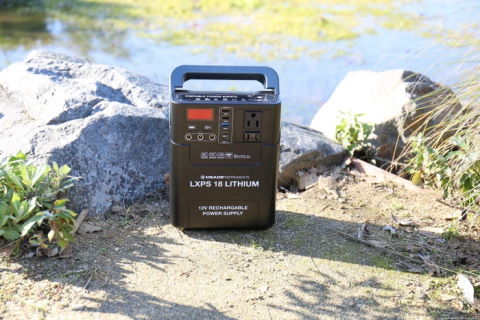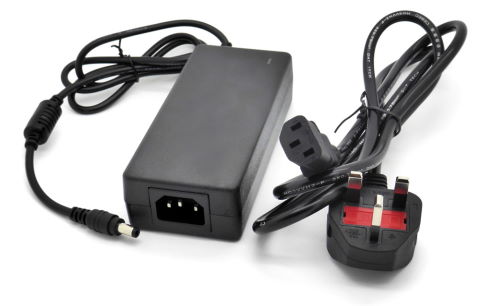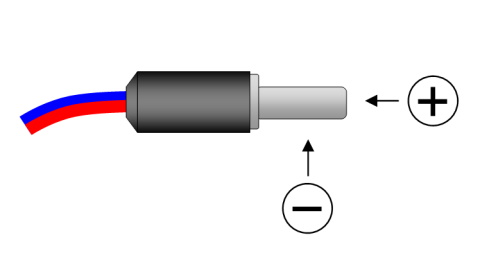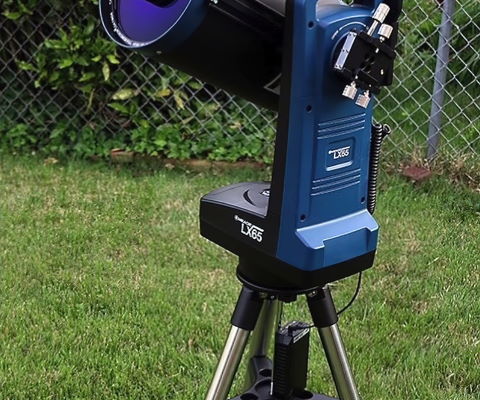Introduction
This article outlines the requirements and issues related to powering your mount/telescope. Please read the article carefully as using the wrong power source can compromise the performance or even damage your equipment.
There are mainly two ways you could power your mount and telescope. You could use batteries, or you could use mains power. In all cases it is important that the correct voltage is applied otherwise you can damage your equipment. Such damage is not covered by warranty and can be readily diagnosed.
Regarding the power source employed voltage and amperage can affect your equipment in several ways as the chart below demonstrates.
| Power Source |
Specified Amperage |
Low Amperage |
High Amperage |
| Specified Voltage |
Not Ideal* |
Inadequate
|
Recommended
|
|
Low Voltage
|
Inadequate
|
Inadequate
|
Inadequate
|
|
High Voltage
|
Danger
|
Danger
|
Danger
|
Specified Voltage/Amperage: As specified by the equipment
Low Voltage/Amperage: Lower than specified by the equipment
High Voltage/Amperage: Higher than specified by the equipment
|
Recommended: Optimal
Not Ideal: Compromised performance
Inadequate: Unlikely to work
Danger: Can cause serious damage to the equipment
|
|
*Please note that the amperage of the power supply you use should be around 20%-25% higher than the amperage required by your equipment. Otherwise, the power supply is likely to overheat and therefore not perform adequately. For example, if your mount’s requirements are 12VDC 2A you would require a 12VDC 2.4A or say a 12VDC 2.5A mains power supply.
|
Power tanks
Telescope manufacturers like Meade supply rechargeable power tanks especially made for powering astronomical equipment. Often, power tanks come in two sizes, 7Ah power tanks are well suited for small and medium mounts/telescopes where 17Ah power tanks are better suited for heavier mounts/telescopes and for the more dedicated amateur astronomer in general.
Large power tanks are typically necessary when using dew-heaters or to power a laptop computer. In all cases it is important to not fully discharge the lead-acid battery typically found inside power tanks, such situation is not covered by warranty. Discharged lead-acid batteries require specialist equipment to recharge if possible.
Typically, once the power tank drops to around 9.5V the power supplied by the power tank will not be enough to power the mount/telescope, the mount/telescope will start misbehaving and as such you will be unable to continue using the equipment in a meaningful manner.
On the other hand, dew-heaters, laptops and the built-in red/white lights can completely discharge the lead-acid battery inside a power tank rendering it unusable if left switched on.

Meade LXPS18 power tank.
Finally, it is recommended to charge a power tank every three months if the power tank is not used, this will prolong the life of the internal lead-acid battery and minimise the possibility of a discharge. Please note that a new and fully charged power tank will show around 13.5V, this will vary to some extent and will decrease as the battery gets older.
Mains power supplies/adapters
You can still power your mount via a mains power supply/adapter. Such power supplies must be regulated/switch-mode and of good quality. Otherwise avoid non-regulated power supplies as they can damage your mount and affect tracking accuracy. Also, linear type power supplies are rather inefficient. Lastly power supplies where you can manually set the voltage are not ideal unless they are regulated in some way.
Always make certain that the mains power supply you use is compatible with your mount/telescope in terms of voltage and power. Using the wrong voltage can damage your mount, such damage is not covered by warranty. Do not be tempted using an unknown power supply just in case it would work with your equipment. Some laptop power supplies for example supply 18VDC and are guaranteed to damage your equipment as soon as they power it.
Mains power supplies are ideally suited for powering your mount/telescope in an observatory or similar installation. If using a mains power supply/adapter outdoors always make certain that the power supply is kept dry by wrapping in a sheet of plastic, some DIY stores and garden-centres supply bespoke cases for this purpose.

Mains power adapter.
Power cables
Whether you use a power tank or mains power supply you would need to use cables to carry the electric current to your equipment. Be aware that freezing temperatures can render plastic and rubber brittle and therefore susceptible to damage. As such do not pull or stretch cables. Always bring the cables inside the house to climatise for say 10-15 minutes before wrapping them up.
It is possible that over time several wire strands inside a cable will break, this will decrease the amount of electrical current that reaches the equipment and may not be enough for it to operate properly. It is also worth keeping in mind that some power cables have internal fuses that can blow and can be easily replaced.
Other ways of powering your telescope
Alternatively, you could power your equipment from a car battery assuming the battery supplied the correct voltage. Most mounts/telescopes require a 12VDC battery, the amperage will vary depending on the mount and telescope. Small Alt-Az mounts typically require around 1 Amp of power, medium size mounts require around 3 Amps where very heavy mounts require 5-7 Amps.
As such a car battery would be able to power any mount/telescope combination assuming that the voltage supplied by the battery is the same with that of the mount/telescope.
A cigarette lighter cable can also be used to power your mount/telescope from a cigarette lighter socket as found in cars and car battery chargers. Please note that cigarette lighter sockets will typically supply power at 12VDC, this needs to ‘match’ your mount/telescope’s requirements.
If you make your own power cable, use thicker cable than you think would be adequate and make certain that you wire it to the battery correctly. Most of the astronomical equipment including Meade’s are PIN-positive. Having said that you would still need to confirm the polarity to suit your equipment.

Meade's polarity pin is positive.
Power issues
Your equipment will not operate properly when the voltage is incorrect, the power reaching the mount is low or when the power source is of low quality. When the power drops below a minimum for any reason the mount will typically not obey or misinterpret commands issued by the handset. Power related issues can be caused by:
- A power source supplying the incorrect voltage, a high voltage could also damage your equipment.
- A mains power supply unable to provide the power (amperage/Amps) required.
- An ageing power tank or battery unable to provide the power (amperage/Amps) required.
- A not fully charged power tank or battery.
- A faulty/partly damaged power cable unable to provide enough or an electric current at all.
- A thin power cable unable to provide enough electric current.
- A non-regulated mains power supply that could affect tracking accuracy.
You can use a voltmeter to ascertain that the power-source you use supplies the correct voltage, also to ascertain that a power cable is in working order. However, a more sophisticated testing device is required to simulate the load (amperage/Amps).
Related topics:
how-to guide, power, article




